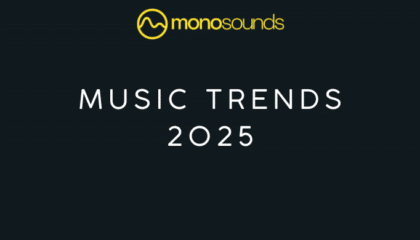
Title: Music Trends 2025: What’s Blowing Up on TikTok and…
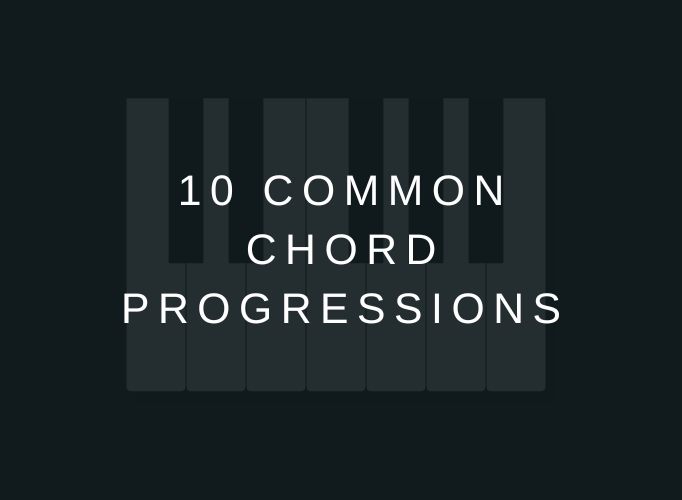
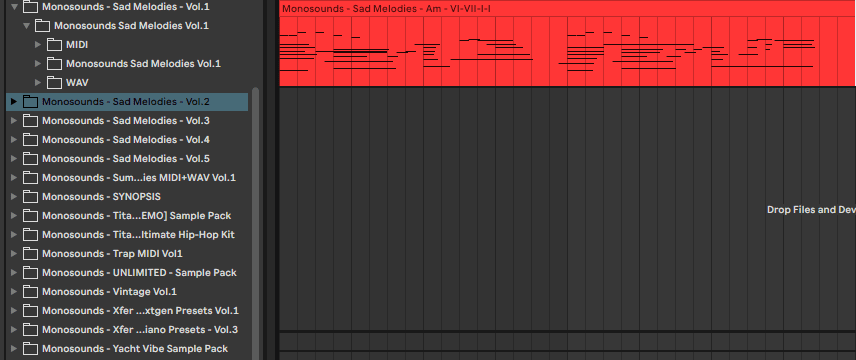
As a music producer, one of the most important skills you can develop is the ability to recognize and use common chord progressions. Chord progressions are the backbone of any song, providing the structure and harmony that support the melody and lyrics. By understanding and mastering different chord progressions, you can create songs that evoke specific emotions, capture different genres, and stand the test of time .
In this blog post, we’ll explore 10 common chord progressions that you’ll instantly recognize. We’ll look at the emotional chords, sad chords, pop chords, EDM chords , trap chord progressions, deep house chords, house chords, hip-hop chords, RnB chords, and drill chords that are essential for anyone learning songwriting and music production. For each chord progression, we’ll provide an example of a popular song that uses it, so you can hear how it sounds in context.
Learning these chord progressions will help you understand how to craft compelling melodies and harmonies, and create songs that capture the essence of different musical genres. Whether you’re a beginner or an experienced producer, understanding and using these chord progressions will help you take your music to the next level.
But that’s not all! We’re excited to introduce you to monosounds.studio MIDI packs, which offer high-quality MIDI files with a variety of chord progressions that you can use in your own productions. Whether you’re looking for inspiration or need a starting point for your next song, these MIDI packs offer a wide range of chord progressions to help you get started. So be sure to check them out! – click here to visit MIDI packs
Are you ready to learn about 10 common chord progressions that you’ll instantly recognize? Let’s get started!
Emotional chords are chord progressions that evoke strong feelings and emotions in the listener. They are often used in ballads, love songs, and songs that deal with loss or heartbreak. Emotional chords are characterized by their use of minor chords, which give them a melancholy or sad sound.
Example chord progression: vi-IV-I-V
One of the most famous examples of an emotional chord progression is the vi-IV-I-V progression, which has been used in countless pop songs. In this progression, the chords are the sixth, fourth, first, and fifth notes of the major scale. The chords are often played in a descending pattern, giving them a melancholy feel.
One popular song that uses this progression is “Someone Like You” by Adele. The song is a heartbreaking ballad about lost love, and the vi-IV-I-V progression perfectly captures the emotions conveyed in the lyrics. The song begins with the vi chord (Am), which sets the melancholy tone for the rest of the song. The chorus features the IV-I-V progression, which provides a sense of resolution and release.
If you want to incorporate emotional chords into your own productions, be sure to check out monosounds.studio – Emotional MIDI pack. They offer a wide variety of emotional chord progressions that you can use in your own songs, so you can evoke the same strong emotions in your listeners.
So, if you want to bring a touch of sadness or melancholy to your music, try using the vi-IV-I-V progression in your next song. Your listeners will feel the emotions and connect with your music on a deeper level.
Now, let’s move on to the next chord progression: sad chords.
Sad chords, as the name suggests, are chord progressions that evoke a sense of sadness or melancholy. They are often used in ballads, slow songs, and songs that deal with loss or heartbreak. Sad chords are characterized by their use of minor chords, which give them a somber and mournful sound.
Example chord progression: i-VI-III-VII
One example of a sad chord progression is the i-VI-III-VII progression, which is commonly used in pop and rock ballads. In this progression, the chords are the first, sixth, third, and seventh notes of the minor scale. The chords are often played in a descending pattern, creating a sense of sadness and longing.
One popular song that uses this progression is “Say You Love Me” by Jessie Ware. The song is a powerful ballad about the fear of rejection and the pain of unrequited love. The i-VI-III-VII progression perfectly captures the emotions expressed in the lyrics, with the minor chords creating a sense of sadness and vulnerability.
If you want to incorporate sad chords into your own productions, be sure to check out monosounds.studio – Sad MIDI pack collection. They offer a variety of sad chord progressions that you can use in your own songs, so you can create a somber and melancholic atmosphere.
So, if you want to convey a sense of sadness or loss in your music, try using the i-VI-III-VII progression in your next song. Your listeners will feel the emotions and connect with your music on a deeper level.
Next up, let’s explore pop chords, which are essential for anyone interested in writing catchy, upbeat songs.
Pop chords are chord progressions that are commonly used in popular music, particularly in catchy and upbeat songs. They are characterized by their use of major chords, which give them a bright and cheerful sound.
Example chord progression: I-V-vi-IV
One of the most recognizable pop chord progressions is the I-V-vi-IV progression, which has been used in countless pop songs over the years. In this progression, the chords are the first, fifth, sixth, and fourth notes of the major scale. The progression is often played in a repeating loop, creating a catchy and memorable melody.
One popular song that uses this progression is “Let Her Go” by Passenger. Despite being a ballad about heartbreak, the I-V-vi-IV progression gives the song a hopeful and upbeat feel. The progression is played throughout the song, creating a catchy and memorable melody that sticks in the listener’s head.
If you want to incorporate pop chords into your own productions, be sure to check out monosounds.studio – Diamond POP pack. They offer a variety of pop chord progressions that you can use in your own songs, so you can create catchy and upbeat melodies that will get stuck in your listeners’ heads.
So, if you want to write a catchy and upbeat song, try using the I-V-vi-IV progression in your next production. Your listeners will be singing along in no time!
Next up, let’s explore EDM chords, which are essential for anyone interested in electronic dance music.
EDM chords are chord progressions that are commonly used in electronic dance music (EDM), particularly in genres like progressive house, trance, and techno. They are characterized by their use of complex chord structures and often incorporate elements of classical music theory.
Example chord progression: vi-IV-V-I
One example of an EDM chord progression is the vi-IV-V-I progression, which has been used in many popular EDM tracks. In this progression, the chords are the sixth, fourth, fifth, and first notes of the major scale. The progression is often played in a repeating loop, creating a hypnotic and trance-like effect.
One popular song that uses this progression is “Levels” by Avicii. The song features a catchy melody played on top of the vi-IV-V-I progression, creating a memorable and danceable track that has become a classic of the genre.
If you want to incorporate EDM chords into your own productions, be sure to check out monosounds.studio EDM sounds & melodies. They offer a variety of EDM chord progressions that you can use in your own tracks, so you can create complex and layered electronic music.
So, if you want to create EDM tracks that will get the dancefloor moving, try using the vi-IV-V-I progression in your next production. Your listeners will be transported to another world!
Next up, let’s explore trap chord progressions, which are essential for anyone interested in trap music.
Trap chord progressions are chord progressions that are commonly used in trap music, which is a subgenre of hip-hop that originated in the Southern United States. Trap music is known for its use of heavy 808 basslines and rapid hi-hat patterns, and trap chord progressions often incorporate minor chords and dissonant intervals.
Example chord progression: i-III-vi-V
One example of a trap chord progression is the i-III-vi-V progression, which has been used in many popular trap songs. In this progression, the chords are the first, third, sixth, and fifth notes of the minor scale. The progression is often played in a repeating loop, creating a dark and ominous atmosphere.
One popular song that uses this progression is “Mask Off” by Future. The song features a catchy melody played on top of the i-III-vi-V progression, creating a memorable and hard-hitting track that has become a staple of the trap genre.
If you want to incorporate trap chord progressions into your own productions, be sure to check out monosounds.studio – MIDI pack. They offer a variety of trap chord progressions that you can use in your own tracks, so you can create dark and intense trap music.
So, if you want to create trap tracks that will make the crowd go wild, try using the i-III-vi-V progression in your next production. Your listeners will be nodding their heads and bouncing to the beat in no time!
Placement ready trap chords, melodies & sounds – click to grab your copy
Next up, let’s explore deep house chords, which are essential for anyone interested in deep house music.
Deep house chords are chord progressions that are commonly used in deep house music, which is a subgenre of house music that originated in the 1980s in Chicago. Deep house is known for its use of soulful vocals, atmospheric pads, and complex chord progressions that create a deep and emotional atmosphere.
Example chord progression: ii-V-I
One example of a deep house chord progression is the ii-V-I progression, which has been used in many popular deep house tracks. In this progression, the chords are the second, fifth, and first notes of the major scale. The progression is often played in a repeating loop, creating a hypnotic and uplifting effect.
One popular song that uses this progression is “Finally” by Kings of Tomorrow. The song features a soulful vocal performance played on top of the ii-V-I progression, creating a deep and emotional track that has become a classic of the deep house genre.
If you want to incorporate deep house chords into your own productions, be sure to check out monosounds.studio – Download Free MIDI pack. They offer a variety of deep house chord progressions that you can use in your own tracks, so you can create soulful and atmospheric music.
So, if you want to create deep house tracks that will transport your listeners to another dimension, try using the ii-V-I progression in your next production. Your listeners will be swaying and grooving to the beat in no time! Need some Deep House inspiration? – check it here 😉
Next up, let’s explore house chords, which are essential for anyone interested in house music.
House chords are chord progressions that are commonly used in house music, which is a genre of electronic dance music that originated in the 1980s in Chicago. House music is known for its use of four-on-the-floor beats and soulful vocals, and house chord progressions often incorporate gospel and jazz elements.
Example chord progression: I-IV-V
One example of a house chord progression is the I-IV-V progression, which has been used in many classic house tracks. In this progression, the chords are the first, fourth, and fifth notes of the major scale. The progression is often played in a repeating loop, creating a joyful and uplifting atmosphere.
One popular song that uses this progression is “Finally” by CeCe Peniston. The song features a powerful vocal performance played on top of the I-IV-V progression, creating a soulful and uplifting track that has become a classic of the house genre.
If you want to incorporate house chords into your own productions, be sure to check out monosounds.studio MIDI pack. They offer a variety of house chord progressions that you can use in your own tracks, so you can create soulful and uplifting music.
So, if you want to create house tracks that will get the dancefloor moving and the crowd singing along, try using the I-IV-V progression in your next production. Your listeners will be transported to a place of pure joy and happiness!
Click here – to get the best House MIDIs & Sounds
Next up, let’s explore hip-hop chords, which are essential for anyone interested in hip-hop music.
Hip-hop chords are chord progressions that are commonly used in hip-hop music, which is a genre of music that originated in the Bronx in the 1970s. Hip-hop is known for its use of beats, samples, and lyrical rhymes, and hip-hop chord progressions often incorporate jazz, funk, and soul elements.
Example chord progression: i-III-IV-V
One example of a hip-hop chord progression is the i-III-IV-V progression, which has been used in many classic hip-hop tracks. In this progression, the chords are the first, third, fourth, and fifth notes of the minor scale. The progression is often played in a repeating loop, creating a groovy and soulful atmosphere.
One popular song that uses this progression is “N.Y. State of Mind” by Nas. The song features a gritty and introspective vocal performance played on top of the i-III-IV-V progression, creating a classic hip-hop track that has become a staple of the genre.
If you want to incorporate hip-hop chords into your own productions, be sure to check out monosounds.studio MIDI pack. They offer a variety of hip-hop chord progressions that you can use in your own tracks, so you can create soulful and groovy music.
So, if you want to create hip-hop tracks that will get your head nodding and your feet tapping, try using the i-III-IV-V progression in your next production. Your listeners will be transported to the streets of New York and beyond!
Need some NY Vibes? – click here and grab your copy
Next up, let’s explore RnB chords, which are essential for anyone interested in RnB music.
RnB chords are chord progressions that are commonly used in RnB music, which is a genre of music that originated in the 1940s and combines elements of blues, jazz, and gospel music. RnB is known for its use of soulful vocals, slow tempos, and romantic themes, and RnB chord progressions often incorporate jazzy and gospel-inspired elements.
Example chord progression: ii-V-I
One example of an RnB chord progression is the ii-V-I progression, which has been used in many classic RnB tracks. In this progression, the chords are the second, fifth, and first notes of the major scale. The progression is often played in a repeating loop, creating a smooth and soulful atmosphere.
One popular song that uses this progression is “I Will Always Love You” by Whitney Houston. The song features a powerful and emotional vocal performance played on top of the ii-V-I progression, creating a classic RnB ballad that has become a staple of the genre.
If you want to incorporate RnB chords into your own productions, be sure to check out monosounds.studio MIDI pack. They offer a variety of RnB chord progressions that you can use in your own tracks, so you can create soulful and romantic music.
So, if you want to create RnB tracks that will make your listeners swoon and fall in love, try using the ii-V-I progression in your next production. Your listeners will be transported to a world of love and romance!
Next up, let’s explore drill chords, which are essential for anyone interested in drill music.
Need more RnB Sounds & MIDIs? – click here and get the best tools in the industry
Drill chords are chord progressions that are commonly used in drill music, which is a subgenre of hip-hop that originated in Chicago in the early 2010s. Drill music is known for its use of aggressive beats, dark lyrics, and fast-paced flows, and drill chord progressions often incorporate minor chords and dissonant intervals.
Example chord progression: i-vi-III-VII
One example of a drill chord progression is the i-vi-III-VII progression, which has been used in many popular drill songs. In this progression, the chords are the first, sixth, third, and seventh notes of the minor scale. The progression is often played in a repeating loop, creating a dark and ominous atmosphere.
One popular song that uses this progression is “Welcome to the Party” by Pop Smoke. The song features an aggressive and energetic vocal performance played on top of the i-vi-III-VII progression, creating a hard-hitting and intense drill track that has become a staple of the genre.
If you want to incorporate drill chords into your own productions, be sure to check out monosounds.studio – Drill Ultimate Sample Pack. They offer a variety of drill chord progressions that you can use in your own tracks, so you can create intense and aggressive music.
So, if you want to create drill tracks that will get your listeners pumped up and ready to go, try using the i-vi-III-VII progression in your next production. Your listeners will be moshing and jumping to the beat in no time!
Understanding chord progressions is essential for anyone interested in songwriting and music production. Each genre has its own unique chord progressions that create a specific emotional atmosphere, and by understanding and utilizing these progressions, you can create music that resonates with your listeners on a deep and emotional level.
Be sure to check out monosounds.studio MIDI pack for a wide range of chord progressions that you can use in your own productions. – click here to visit

Title: Music Trends 2025: What’s Blowing Up on TikTok and…
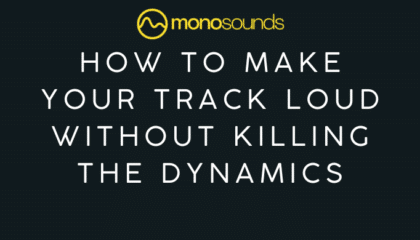
Introduction Hey there, it’s Maxim Hetman — sound designer, mixing…
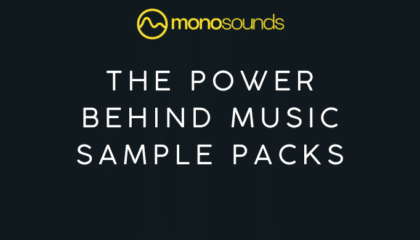
Title: Why Custom Serum Presets Beat Stock Sounds Every Time:…

So, you’ve been inspired by the insane soundscapes of Flume…
